How to Fix Activation Error: 0xC004C003 on Windows 11
The 0xC004C003 activation error code is an old issue that has been around since Windows 7. However, recently we have seen a surge in user reports dealing with the 0xC004C003 error after an activation failure on Windows 10 and Windows 11.
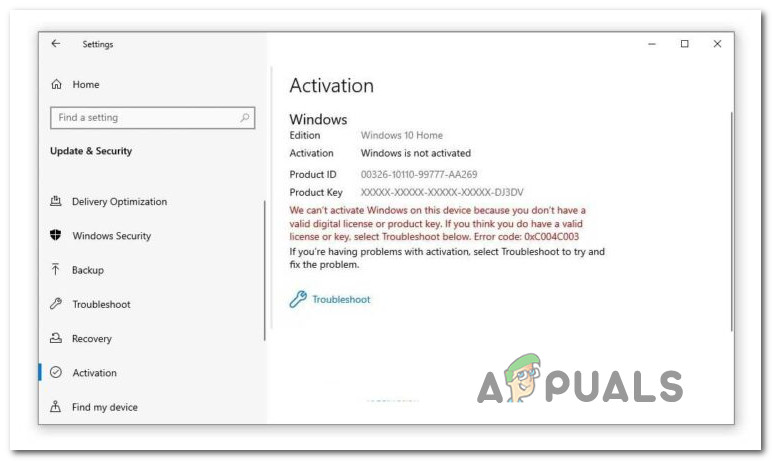
After investigating the recent resurgence of this issue, it turns out that the problem most likely occurs when attempting to activate an operating system (Windows 7, Windows 8.1, Windows 10, and Windows 11) with an OEM Activation 3.0 (OA3) Digital Product Key (DPK).
Whenever the licensing code tries to access a registry hive without proper access, you can expect to see the 0xC004C003 error, as access is denied and the product key is not extracted successfully.
However, there are multiple causes for the Activation utility not having the necessary permissions to activate your license key, resulting in the 0xC004C003 error instead. Here is a list of potential culprits:
- Target PC is missing the January 2021 Security Update – If you recently upgraded to Windows 11 and are no longer able to activate it, you should start by ensuring that the January 2021 Security Update is installed. If you are using a standard-issue PC from a major OEM, such as the Intel Mini PC, you can most likely fix the issue once you update to the latest available OS build.
- Generic Licensing Key Inconsistency – Another scenario that might be applicable is if you have recently upgraded, which could cause a general licensing inconsistency. Most of these issues can be rectified by running the Activation Troubleshooter and applying the recommended fix.
- Recent Motherboard, GPU, or CPU change – If your Windows version was previously activated and you suddenly discover that it is not, this might be because you recently changed your motherboard, CPU, or GPU. If you recently made some hardware changes to your PC, you should be able to reactivate your Windows installation by rearming the Software Licensing Management Tool.
- Incorrect Product key for Windows version – If you were using a Home Windows version and upgraded to a different version of Windows 11 (Pro, Enterprise, or N version), chances are you’re seeing this error because the product key you own is not compatible with this version.
- Microsoft account-related issue -It’s also possible to encounter this issue due to a Microsoft account-related problem that is entirely beyond your control. In this case, the only viable solution you can pursue is to contact a Microsoft live agent and ask them to troubleshoot the issue.
Now that you are familiar with every potential cause that might trigger the 0xC004C003 error, let’s begin troubleshooting the issue.
1. Install the January 2021 security release.
Since this issue is almost always related to an inconsistency in a registry hive that the Activation tool cannot access due to insufficient access permissions, the first thing you should investigate is your current Windows build.
Microsoft has already addressed this issue with update KB5000842 – this patch is a security update present on both Windows 10 and Windows 11.
All you need to do to ensure it’s installed is to install every available update until you bring your Windows build up to date.
Note: Keep in mind that if you are using the Intel NUC11PHKi7CAA Mini PC, chances are you will see this activation error due to a conflict between the motherboard driver and KB5001692. In this case as well, the solution remains the same – you need to install the latest pending feature updates, security updates, and cumulative updates via Windows Update.
If this scenario seems applicable and you are not using the latest version of Windows, follow the step-by-step instructions below to install every pending security update.
Note: The instructions below will work on both Windows 10 and Windows 11.
- Press the Windows key + R to open a Run dialog box. Next, type ‘ms-settings:windowsupdate‘ inside the text box and press Enter to open the Windows Update screen.
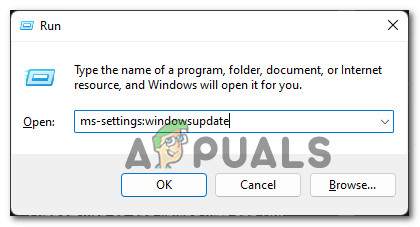
Accessing the Windows Update screen - If you’re prompted by the User Account Control window, click Yes to grant admin access.
- Once you are inside the Windows Update screen, move over to the right-hand section of the screen and click on the “Check for Updates” button.

Check for Windows Updates - If new pending updates are identified, click on “Install All,” and then wait until every pending update is installed. Note: If you have many pending updates waiting to be installed, you will be prompted to restart before every Windows update is installed. If this happens, restart as instructed, but ensure that you return to this same screen once the next startup is complete.
- After you manage to update your Windows OS to the latest version available, try activating your OS once again and see if the same 0xC004C003 error code persists.
In case the same kind of issue still occurs or you already have the latest Windows updates installed, proceed to the next potential fix below.
2. Troubleshoot with the Activation Troubleshooter.
Keep in mind that Microsoft has been aware of most of these activation errors plaguing Windows for years.
If the problem is caused by a temporary inconsistency and your product license key is legitimate, you should be able to address the issue automatically by running the Activation Troubleshooter and applying the recommended fix.
Note: This will only work in those scenarios where the 0xC004C003 error is caused by a licensing restriction issue that is rooted locally.
Follow the instructions below for the complete guide on running the Activation Troubleshooter and applying the recommended fixes:
- Press the Windows key + R to open a Run dialog box. Next, type ‘ms-settings:activation‘ inside the text box and press Enter to open the Activation tab within the Settings app.
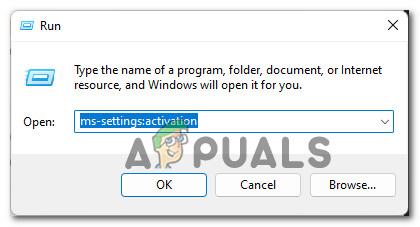
Running the Activation troubleshooter - Once you are inside the Activation Troubleshooter menu within the Settings app, move to the right-hand section of the screen (under Activation State) and click on the Troubleshoot button below the error that you are encountering.
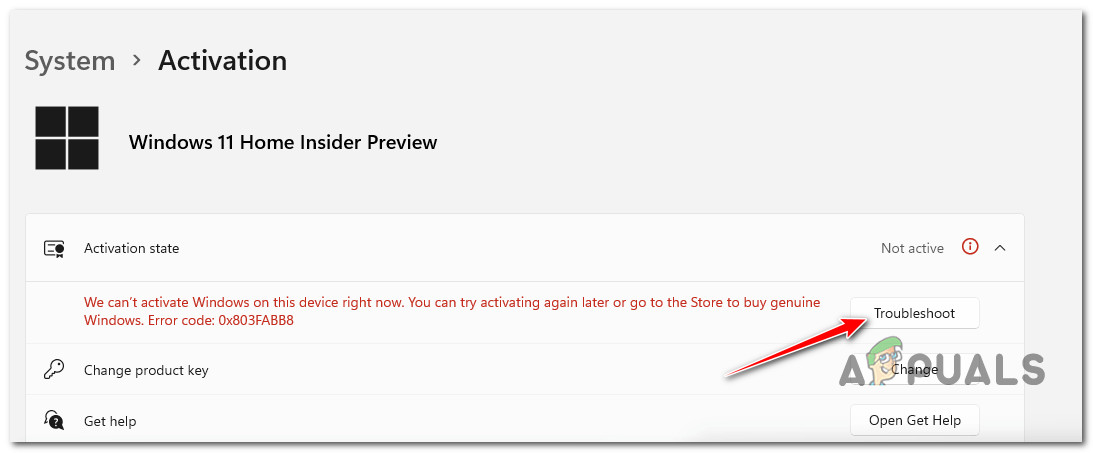
Running the activation troubleshooter - Once the Activation Troubleshooter utility has started, wait patiently until the initial scan is complete. Note: The tool will begin scanning for any inconsistencies related to the product key you are using and the associated activation dependencies.
- If a viable fix is identified, you will be presented with a screen where you can click on “Apply this Fix” to apply the solution recommended by Microsoft.
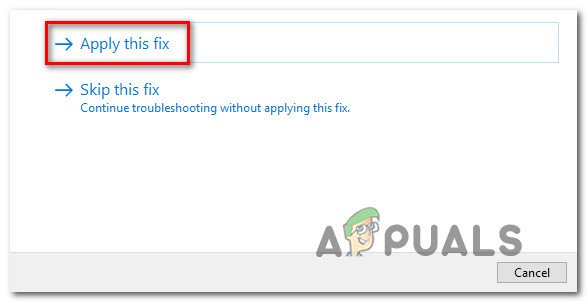
Applying the recommended fix - Once the fix is successfully applied, reboot your PC and check if Windows 11 is activated after your computer boots back up.
If your Windows remains unactivated and you continue to see the 0xC004C003 error code when you attempt to activate your product key, proceed to the next potential solution below.
3. Rearm the Software Licensing Management Tool.
If you have recently made some hardware changes, such as replacing your motherboard, GPU, CPU, or RAM memory sticks, you might find that your Windows installation is no longer activated. This is typically the case with digital product keys and is due to a security measure that Microsoft implements to prevent the use of single product keys on multiple devices.
Fortunately for you, if you are experiencing this problem, you can resolve it easily by rearming the product key on your PC using the Software Licensing Management tool from an elevated Command Prompt.
Note: This method should work for you regardless of your Windows version or iteration.
Follow the instructions below to learn how to open an elevated command prompt and re-arm your digital product key for Windows via SLMGR to resolve the 0xC004C003 activation error:
- Press the Windows key + R to open a Run dialog box. Next, inside the text box that just appeared, type ‘cmd‘ and press Ctrl + Shift + Enter to open an elevated Command Prompt.
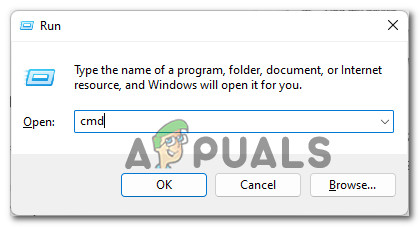
Open up a CMD prompt - When you’re prompted by the User Account Control, click Yes to grant admin access.
- Once you’re inside the elevated Command Prompt, type the following command to rearm your current product key:
slmgr.vbs –rearm
- Hit Enter to process the command, and then wait until you receive the success message (Command Completed Successfully) before restarting your PC.
- After your PC boots back up, check the activation tab again to see if your PC is now activated.
In case your Windows computer is still not activated and you are receiving the 0xC004C003 activation error when you attempt to activate it, proceed to the next potential fix below.
4. Retrieve the generic product ID key.
Another reason why you might expect to face this issue is a scenario in which you are actually using the incorrect product key for the Windows version that you have installed. For example, you might have installed Windows 11 Pro, while the product key that you own is only valid for the Home version.
Fortunately for those of you who find yourselves in this scenario, you can resolve the issue by using the Registry Editor to retrieve the correct generic product key according to your Windows version.
After you do so and you are no longer seeing the 0xC004C003 activation error, you should be able to activate without any issues.
Here is what you need to do:
- Press the Windows key + R to open up a Run dialog box. Next, type ‘regedit‘ inside the text box, and then press Ctrl + Shift + Enter to open the Registry Editor utility with admin access.
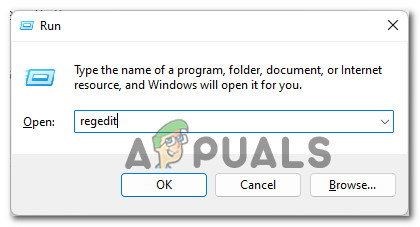
Open up the Regedit utility - At the User Account Control (UAC) window, click “Yes” to grant admin access.
- Once you’re finally inside the Registry Editor, use the section on the left to navigate to the following location:
Computer\HKEY_LOCAL_MACHINE\SOFTWARE\Microsoft\Windows NT\CurrentVersion
Note: You can either reach this location manually, or you can paste the entire path into the navigation bar at the top and press Enter to arrive there instantly.
- After you are inside the correct location, make sure “CurrentVersion” is selected from the pane on the left. Then, move over to the right-hand side pane and double-click on “ProductID.

Accessing the Product ID - Inside the Product ID string, simply copy the generic product key. Then, return to the activation tab and add it to temporarily activate your operating system.
- Reboot your PC and wait until you receive the prompt warning that your Windows is no longer activated. When it appears, insert your own product key, and you should be able to activate your Windows installation without encountering the same 0xC004C003 activation error.
If this method was not applicable in your particular scenario, move on to the next potential fix below.
5. Get in Touch with Microsoft
If none of the methods above have worked in your case, chances are this activation issue is entirely beyond your control. It’s not uncommon to see this issue occur due to an inconsistency related to the Microsoft account tied to the product key that’s giving you the 0xC004C003 error.
In scenarios such as the one described above, the only viable solution is to contact a Microsoft Live agent and ask them to troubleshoot the issue for you.
There are actually multiple ways to get in contact with a Microsoft support representative, but the quickest of them all is to simply call the toll-free number associated with the region in which you are located.
Here is a list of official country-specific toll-free numbers from Microsoft that you can call.

Once you are assigned to a human, you will be asked a few security questions to prove that you are indeed the owner of the product key you are trying to activate.
But once everything checks out and they’re able to confirm that you hold ownership over the product key, they have the power to re-instate or activate the product key to the target machine remotely.